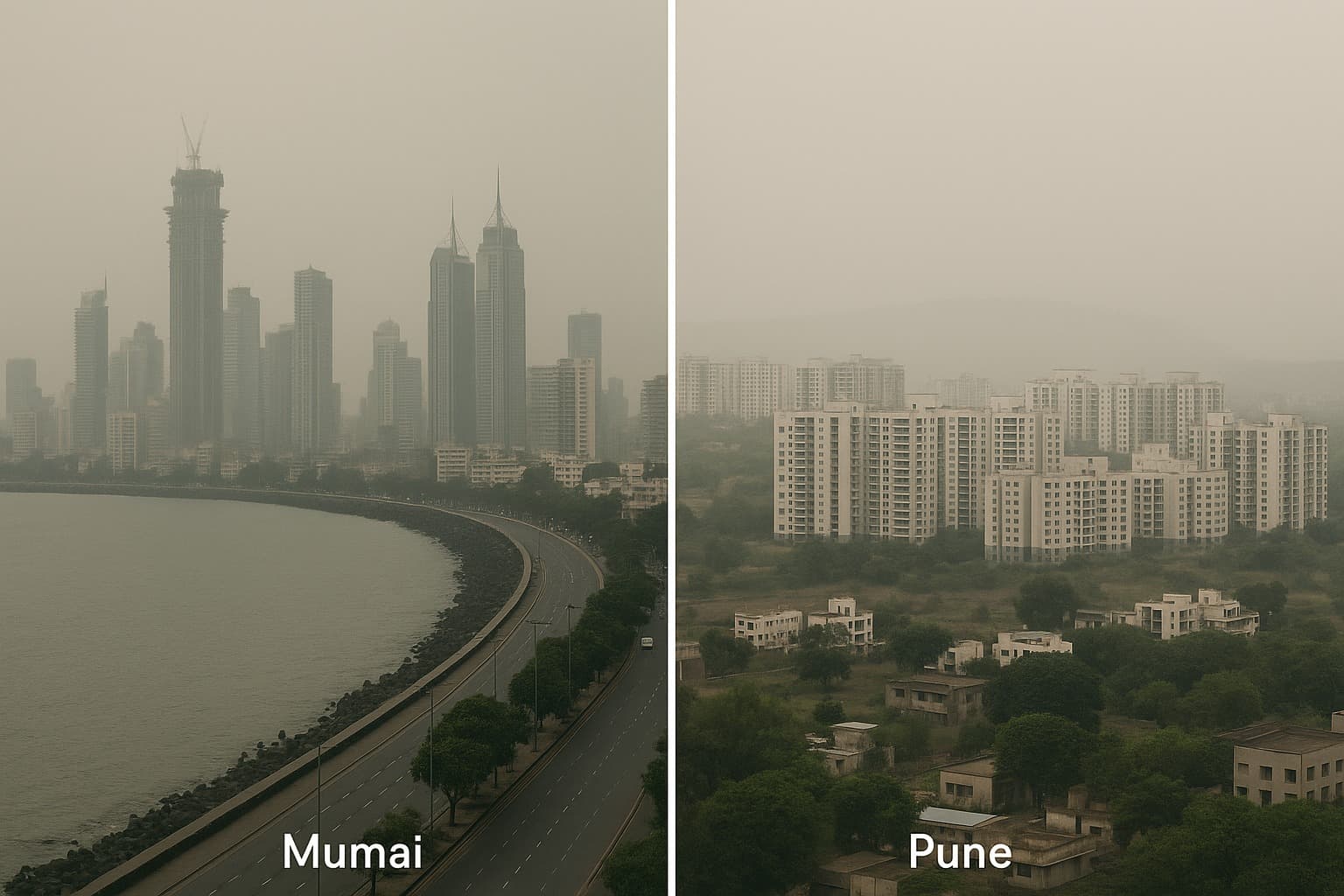India Housing Sales Dip Slightly in Q3 2025, But Premium Segment Drives Value Growth
Summary
India's housing sales saw a minor 1% dip in Q3 2025, but a 14% value surge driven by premium homes demonstrates market resilience. Southern cities thrived, offsetting declines in MMR and Pune, indicating evolving buyer preferences.

National Overview: A Marginal Decline Amid Value Growth
According to the Q3 2025 housing sales report India, residential sales across the top eight cities dipped marginally by 1 percent year-on-year, totalling 95,547 units as compared to 96,544 units sold during the same period last year. While volumes softened slightly, the overall value of sales rose 14 percent, reaching ₹1.52 lakh crore, signaling continued momentum in the mid-to-premium housing segment.The India real estate news highlights that the sector remains resilient despite short-term fluctuations, with developers focusing on quality projects and homebuyers showing preference for ready or near-ready homes. This steady growth in value reflects the evolving demand trends in housing sales India, where buyers are prioritizing lifestyle and long-term asset security over short-term affordability.
MMR and Pune Face the Steepest Declines
The report revealed that the Mumbai Metropolitan Region (MMR) and Pune property market faced the most significant slowdowns. MMR real estate recorded a decline of 22.2 percent, while Pune witnessed a sharper fall of 27.9 percent in sales during Q3 2025.Analysts attribute this downturn to a combination of high property prices, reduced affordability, and delayed project deliveries. Despite these challenges, MMR continued to account for 24.4 percent of India’s total housing sales, reaffirming its position as the country’s largest residential market. Pune, on the other hand, showed signs of correction, with developers expected to refocus on mid-income projects in the coming quarters.
Southern Markets Emerge as Growth Leaders
While western India struggled, southern cities such as Chennai, Hyderabad, and Bengaluru registered strong year-on-year growth. Chennai witnessed a remarkable 120.9 percent rise in home sales, while Hyderabad followed with a 52.7 percent increase. Bengaluru saw moderate growth of 17.6 percent, supported by consistent end-user demand and expanding tech-driven employment.This regional divergence underscores that the real estate report reflects a market in transition rather than decline. Strong infrastructure, stable prices, and improving connectivity in southern markets have helped sustain momentum, offsetting declines in MMR and Pune.

New Launch Trends and Market Supply
The total number of new housing launches across India’s top cities fell by 5.1 percent year-on-year, amounting to 91,807 units. However, when compared to the previous quarter, there was a 3.6 percent increase, reflecting cautious optimism among developers.Many builders are focusing on completing ongoing projects rather than initiating new ones, in line with changing buyer preferences for ready possession properties. This measured supply approach is expected to stabilize inventory levels, particularly in oversupplied regions such as the MMR real estate and Pune property market.Developers are also shifting towards compact, affordable luxury units—responding to the evolving dynamics highlighted in the India housing sales performance Q3 2025 with city-wise breakdown.
Premium Housing Drives Value Growth
Despite the housing sales dip 1 percent in Q3 2025 across India, the market displayed remarkable resilience, driven by a sharp rise in transaction value led by premium and luxury home sales. This surge, despite a slight decline in overall volume, reflects a structural shift toward higher-value properties in major metropolitan regions. Buyers are increasingly prioritizing quality, design, and lifestyle features over pure affordability, indicating a maturing and discerning housing market. Metropolitan cities such as Mumbai, Delhi-NCR, Bengaluru, and Hyderabad are witnessing a surge in demand for spacious, amenity-rich residences equipped with wellness zones, co-working areas, and advanced home automation. The post-pandemic preference for comfort and exclusivity has reshaped urban housing aspirations, with homeowners viewing property as a lifestyle statement rather than merely an investment.Buyers are also exhibiting greater trust in established, branded, and RERA-registered developers, valuing transparency and timely delivery over aggressive pricing. This trend, as captured in the India real estate news, highlights the sector’s evolving nature—where value-driven demand now anchors growth. The real estate market report affirms that this focus on quality and reliability is helping the industry maintain stability, even amid temporary sales fluctuations, positioning India’s housing sector for long-term sustainable expansion.
What’s Causing the Slowdown in MMR and Pune
Several interconnected factors contributed to the weaker performance in the MMR and Pune property markets. The sustained rise in property prices, higher mortgage rates, and reduced housing affordability have restrained new buyer entries.Additionally, ongoing infrastructure upgrades and construction bottlenecks have delayed handovers, discouraging fresh bookings. The real estate market slowdown MMR is therefore seen as cyclical rather than structural—reflecting a natural market pause after a period of high growth in 2023–2024.Analysts predict that with improved liquidity and government-backed housing incentives, both Mumbai Metropolitan Region and Pune are expected to regain momentum in the next fiscal year.

Demand Resilience in Emerging Cities
Cities such as Ahmedabad, Kolkata, and Delhi-NCR continued to post steady performance, collectively offsetting the western market slowdown. These regions benefited from lower entry prices and faster project completions. For many first-time buyers, these markets offer attractive alternatives to Mumbai and Pune, leading to a more balanced national demand landscape. The Q3 2025 housing sales report India confirms that the underlying sentiment across India remains positive, supported by job stability, improving infrastructure, and government-led urban development projects.This broad-based stability reaffirms confidence in the long-term outlook of housing sales India and the overall India residential sales data 2025.
Outlook: Stabilization Before a Fresh Growth Cycle
Industry experts view the 1 percent decline as a short-term correction following two years of exceptional growth. With interest rates expected to ease and project completions picking up, the sector is poised for recovery in early 2026.Developers are recalibrating pricing strategies to appeal to middle-income buyers, while buyers themselves are becoming more discerning and research-driven. The real estate market report shows sales decline in MMR and Pune regions, but also highlights resilience in southern markets that could drive future growth.Overall, the housing demand trends in top Indian cities suggest that India’s residential sector remains fundamentally strong, with temporary regional dips balancing against broader national stability.
According to the latest property market report, housing sales dipped 1 percent in Q3 2025 across India, with the Mumbai Metropolitan Region (MMR) and Pune witnessing the sharpest declines of 22.2 percent and 27.9 percent respectively. Despite the dip, overall sales value surged 14 percent to ₹1.52 lakh crore, driven by premium housing demand. Southern cities like Chennai and Hyderabad posted strong gains, balancing western slowdowns. The real estate report indicates a maturing market, showing stability, resilience, and evolving buyer preferences.
